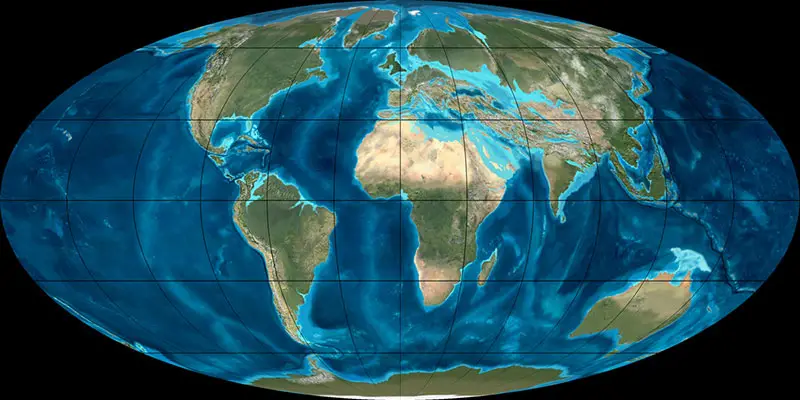†Qatrania (Parapithecidae)
Qatrania ist eine Primatengattung innerhalb der Familie Parapithecidae, deren 4 Mitglieder ab dem frühen Paläogen (Oligozän) im Rupelium lebten, das vor ungefähr 33,9 Millionen Jahren begann und bis vor 28,1 Millionen Jahren andauerte. Viele Überreste wurden in Ägypten gefunden.
Qatrania aus der Familie Parapithecidae innerhalb der Unterordung Anthropoidea (Höhere Primaten) war im Oligozän in Nordafrika verbreitet.
Die beiden Arten Q. wingi und Q. fleaglei stammen aus Sedimenten der Faymum-Senke in Ägypten.
Qatrania fleaglei
Das Typusexemplar mit der Bezeichnung CGM 41850 ist ein rechter Unterkiefer mit Prämolaren und Molaren (P4-M2). Der Fund stammt aus der Jebel Qatrani Formation (Fayum, Ägypten) und ist zwischen 33,9 und 28,4 Millionen Jahre alt.
| Sammlung | Kommentar zum Fundort | Epoche, Alter | Geologie, Formation | Kommentar zur Sammlung |
|---|---|---|---|---|
| Quarry M (Jebel Qatrani Formation) | Jebel Qatrani | Fayum "upper sequence" | ||
| Kommentar z. Stratigraphie | Lithographie | Museum | ||
| Quarry M is about "250 m above the base" of the formation (Simons et al. 2007) and in the "upper sequence" = Upper Fossil Wood Zone (there are two general fossil producing levels in the Jebel Qatrani, the "upper" and the "lower" sequences) | at least one Aegyptopithecus specimen was filled with "sandstone matrix" (Simons et al. 2007) | YPM |
| Physiologie | |
|---|---|
| Gewicht: | ? |
| Schwestertaxa | |
Qatrania wingi
Das Typusexemplar mit der Bezeichnung CGM 40240 ist ein rechter Unterkieferast mit Prämolaren und Molaren (P4-M2) und der Wurzel von P3. Der Fund stammt aus der Jebel Qatrani Formation (Fayum, Ägypten) und ist zwischen 33,9 und 28,4 Millionen Jahre alt.
| Sammlung | Kommentar zum Fundort | Epoche, Alter | Geologie, Formation | Kommentar zur Sammlung |
|---|---|---|---|---|
| Quarry E (Jebel Qatrani Formation) | Jebel Qatrani | Fayum "lower sequence" | ||
| Kommentar z. Stratigraphie | ||||
| Quarry E is in the "lower sequence" (there are two general fossil producing levels in the Jebel Qatrani, the "upper" and the "lower" sequences), and from the Lower Fossil Wood zone according to Simons and Kay 1983 |
Literatur
E. L. Simons, R. F. Kay 1983, Qatrania, new basal anthropoid primate from the Fayum, Oligocene of Egypt. Nature. 304, p. 624 - 626E. L. Simons, R. F. Kay 1988, New material of Qatrania from Egypt with comments on the phylogenetic position of the Parapithecidae (Primates, Anthropoidea). American Journal of Primatology. 15, p. 337 - 347
E. L. Simons, E. R. Seiffert, P. S. Chatrath, Y. Attia 2001, Earliest record of a parapithecid anthropoid from the Jebel Qatrani Formation, northern Egypt. Folia Primatologica. 72, p. 316 - 331
